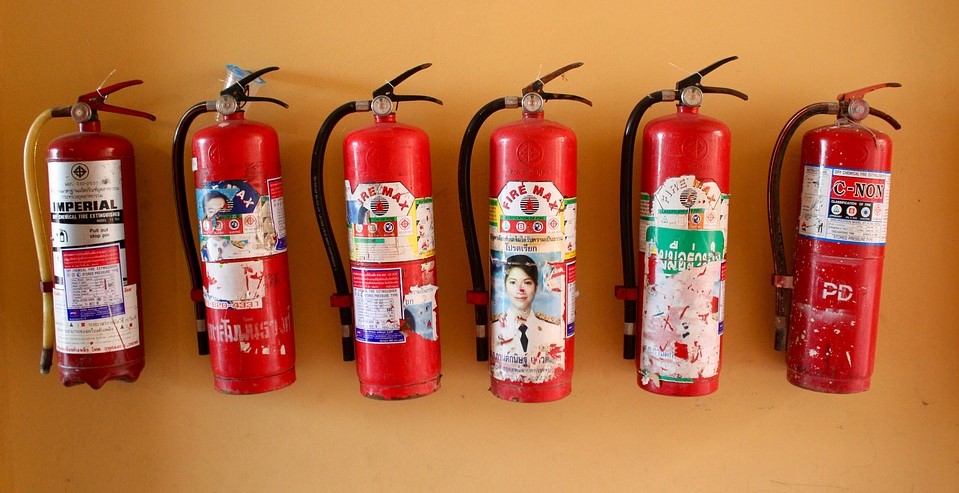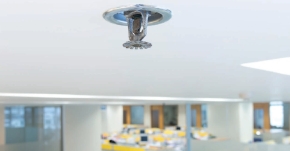Extinguishment

|

|
International Fire Safety Standards: Common Principles, Safe Buildings Save Lives, First Edition, published by the International Fire Safety Standards Coalition in 2020 defines extinguishment (or fire control) as: ‘Suppressing of fire and protecting of the surrounding environment.’
The most common extinguishing agents are:
- Water
- Foam
- Carbon dioxide
- Dry powder
- Clean agents
- Inert gases
These agents can be applied either by the occupants themselves, through auto-suppression systems, or by the fire and rescue service.
Sprinklers are designed to extinguish small fires or contain growing fires until the fire-and-rescue service arrives. Almost all buildings over 30m high must be fitted with a sprinkler system installed in accordance with the appropriate British Standards.
Sprinkler heads are heat sensitive and normally activate at 68°C. Each sprinkler head acts as its own heat detector and only those in the fire area will be activated. An individual sprinkler head typically covers around 9m2.
In certain buildings, it can be difficult for the fire-and-rescue service to safely reach and work close to fires. Under such circumstances, additional facilities are required to ensure that there is no delay and to provide a secure operating base. This might include:
[edit] Related articles on Designing Buildings Wiki
Featured articles and news
The UK's Modern Industrial Strategy: A 10 year plan
Previous consultation criticism, current key elements and general support with some persisting reservations.
Building Safety Regulator reforms
New roles, new staff and a new fast track service pave the way for a single construction regulator.
Architectural Technologist CPDs and Communications
CIAT CPD… and how you can do it!
Cooling centres and cool spaces
Managing extreme heat in cities by directing the public to places for heat stress relief and water sources.
Winter gardens: A brief history and warm variations
Extending the season with glass in different forms and terms.
Restoring Great Yarmouth's Winter Gardens
Transforming one of the least sustainable constructions imaginable.
Construction Skills Mission Board launch sector drive
Newly formed government and industry collaboration set strategy for recruiting an additional 100,000 construction workers a year.
New Architects Code comes into effect in September 2025
ARB Architects Code of Conduct and Practice available with ongoing consultation regarding guidance.
Welsh Skills Body (Medr) launches ambitious plan
The new skills body brings together funding and regulation of tertiary education and research for the devolved nation.
Paul Gandy FCIOB announced as next CIOB President
Former Tilbury Douglas CEO takes helm.
UK Infrastructure: A 10 Year Strategy. In brief with reactions
With the National Infrastructure and Service Transformation Authority (NISTA).
Ebenezer Howard: inventor of the garden city. Book review.
The Grenfell Tower fire, eight years on
A time to pause and reflect as Dubai tower block fire reported just before anniversary.
Airtightness Topic Guide BSRIA TG 27/2025
Explaining the basics of airtightness, what it is, why it's important, when it's required and how it's carried out.
Construction contract awards hit lowest point of 2025
Plummeting for second consecutive month, intensifying concerns for housing and infrastructure goals.
Understanding Mental Health in the Built Environment 2025
Examining the state of mental health in construction, shedding light on levels of stress, anxiety and depression.





















